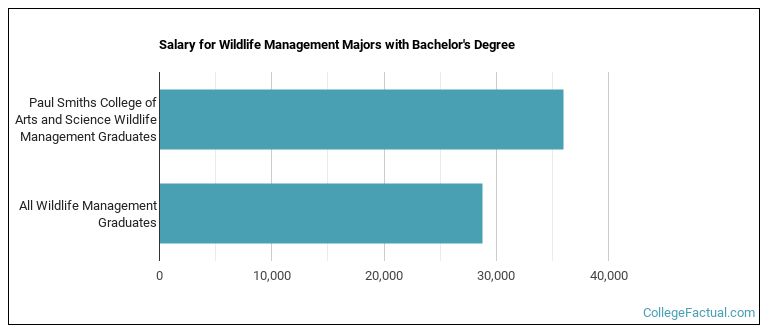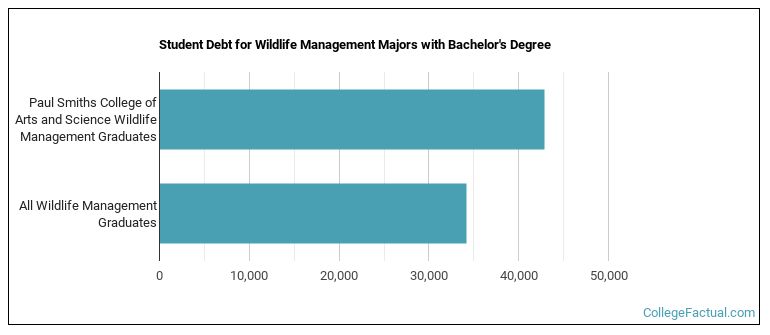 by our College Data Analytics Team
by our College Data Analytics TeamWe've pulled together some essential information you should know about the program, including how many students graduate each year, the ethnic diversity of these students, average starting salaries, and more. We've also included details on how Paul Smith's College ranks compared to other colleges offering a major in wildlife.
Go directly to any of the following sections:
Learn about start dates, transferring credits, availability of financial aid, and more by contacting the universities below.
BS in Environmental Science - Natural Resources & Conservation
Develop a broad-based interdisciplinary skill set to solve complex environmental problems like climate change, alternative energy and sustainability with a specialized online degree from Southern New Hampshire University.
The bachelor's program at Paul Smith's College was ranked #26 on College Factual's Best Schools for wildlife list. It is also ranked #1 in New York.
| Ranking Type | Rank |
|---|---|
| Best Wildlife Management Bachelor’s Degree Schools | 23 |
| Best Wildlife Management Schools | 26 |
During the 2021-2022 academic year, Paul Smiths College of Arts and Science handed out 15 bachelor's degrees in wildlife management. This is a decrease of 17% over the previous year when 18 degrees were handed out.
The median salary of wildlife students who receive their bachelor's degree at Paul Smith's College is $35,979. This is great news for graduates of the program, since this figure is higher than the national average of $28,748 for all wildlife bachelor's degree recipients.

While getting their bachelor's degree at Paul Smith's College, wildlife students borrow a median amount of $42,823 in student loans. This is higher than the the typical median of $34,223 for all wildlife majors across the country.

During the 2022-2023 academic year, part-time undergraduate students at Paul Smith’s College paid an average of $1,067 per credit hour. No discount was available for in-state students. The following table shows the average full-time tuition and fees for undergraduates.
| In State | Out of State | |
|---|---|---|
| Tuition | $32,012 | $32,012 |
| Fees | $37 | $37 |
| Books and Supplies | $1,000 | $1,000 |
| On Campus Room and Board | $16,106 | $16,106 |
| On Campus Other Expenses | $2,500 | $2,500 |
Learn more about Paul Smith’s College tuition and fees.
For the most recent academic year available, 60% of wildlife bachelor's degrees went to men and 40% went to women.

The majority of bachelor's degree recipients in this major at Paul Smith's College are white. In the most recent graduating class for which data is available, 93% of students fell into this category.
The following table and chart show the ethnic background for students who recently graduated from Paul Smiths College of Arts and Science with a bachelor's in wildlife.

| Ethnic Background | Number of Students |
|---|---|
| Asian | 0 |
| Black or African American | 0 |
| Hispanic or Latino | 0 |
| White | 14 |
| Non-Resident Aliens | 0 |
| Other Races | 1 |
Online degrees for the Paul Smith’s College wildlife bachelor’s degree program are not available at this time. To see if the school offers distance learning options in other areas, visit the Paul Smith’s College Online Learning page.
Take a look at the following statistics related to the make-up of the wildlife majors at Paul Smiths College of Arts and Science.
| Related Major | Annual Graduates |
|---|---|
| Forestry | 29 |
| Natural Resource Management | 17 |
| Natural Resources Conservation | 8 |
| Fisheries Sciences | 6 |
More about our data sources and methodologies.